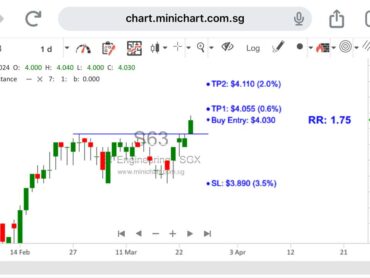Maybank Research Pte Ltd March 27, 2025
Singapore Telcos Face Persistent Headwinds as Consumers Seek Cheaper Mobile Plans
Consumer Preferences Shift Towards Low-Cost Competitors
A recent consumer survey conducted by Maybank Research reveals a worrying trend for Singapore’s top telcos – consumers are actively seeking ways to reduce their monthly mobile spending. The survey of over 125 respondents found that the average monthly mobile spend is SGD22, while the preferred spending is just SGD16, suggesting a potential 25% downside risk to mobile ARPUs.
Notably, 47% of respondents are open to switching to low-cost competitors like Simba, MVNOs, and digital brands, compared to only 23% who don’t want to switch. The top reasons driving this shift are lower pricing (37%), attractive roaming plans (16%), and no contract lock-in. Interestingly, network quality and brand reputation rank lower as key considerations.
Simba Continues to Gain Ground
Simba, the disruptive low-cost mobile operator, has been a major thorn in the side of incumbents. In 1HFY25, Simba posted strong 31% YoY mobile revenue growth, while the incumbents saw a 3% YoY decline. Simba’s mobile revenue market share now stands at 6%, up 1.5 percentage points year-on-year, and the company aims to continue growing its market share.
Simba’s simple, competitively-priced offerings, which include 88-300GB data and 2-10GB international roaming, are proving attractive to cost-conscious consumers. The company has also made inroads in the fixed broadband segment, adding 11k subs in 1HFY25. With a healthy 45% EBITDA margin and a strong cash position, Simba appears well-positioned to keep the pressure on the incumbents.
Starhub Faces Greater Risks, Singtel Relatively Shielded
The presence of aggressive MVNOs and Simba’s market share ambitions suggest that the competitive landscape in Singapore’s telecoms market is likely to remain elevated. Our analysis suggests that Simba may prioritize market share gains over profitability, which could continue to weigh on Starhub’s performance.
Starhub derives around 41% of its revenue from mobile and fixed broadband, which are likely to be the most affected segments. In contrast, Singtel’s Singapore consumer business accounts for only 12-13% of group revenue and less than 5% of its sum-of-the-parts valuation, making it relatively more shielded from the intense competition.
Maybank Research has consequently trimmed its 2025-27E forecasts for Starhub, cutting its mobile/fixed broadband revenues by 1-2%, NPAT by 1-3%, and its target price by 4% to SGD1.20, while maintaining a HOLD rating. Singtel, on the other hand, remains a BUY, with potential catalysts from Optus cost-cutting, robust associate/data center growth, and possible capital recycling.




